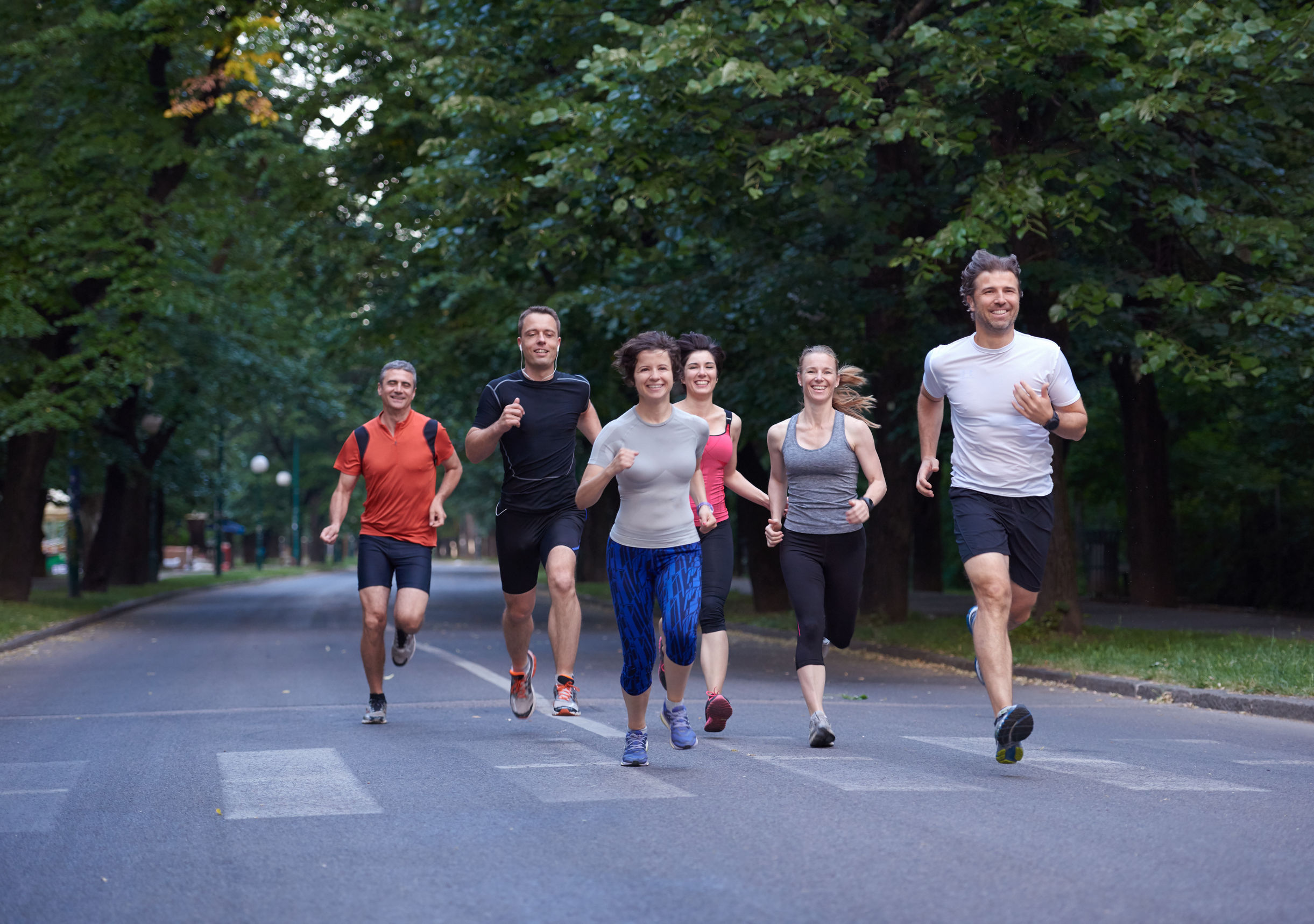”New York, are you trying to improve your running? Making your stride more efficient is one of the best ways to improve your performance and prevent injury. Check out this week's article to learn more!
Reading time: 8 Minutes
MWi Hacks:
- Learn some useful tips on running technique
- Implement these simple ideas to improve your endurance workouts
MWi Summary:
- Here are six tips to help improve your running stride:
- Avoid over-striding
- Maintain a tall posture as you run
- Relax your shoulders
- Strengthen your glutes and core
- Don’t bounce or rotate excessively
- Control your breathing
PROPER RUNNING TECHNIQUE: TOP SIX TIPS
1. AVOID OVER-STRIDING
Regardless of whether you heel strike or forefoot strike, the position of this contact in relation to the rest of your body has a huge role to play in determining how heavy the impact and subsequent braking forces are.
A good rule of thumb in terms of over-striding is to look for the alignment of knee and ankle upon initial contact. Ideally we’re looking for the knee to be flexing directly above the ankle on initial contact. If the runner is over-striding, you’ll see the ankle ahead of the knee.
Over-striding patterns such as those seen above can be the result of a number of factors, in particular poor posture and a running with a cadence (stride frequency) too slow for the given speed.
Try increasing your running cadence (stride frequency) by 5% and feel how it encourages you to reduce the over-stride. In turn you’ll feel lighter on your feet as your contact time decreases.
A basic digital metronome is a great tool for achieving and maintaining an increased running cadence.
2. MAINTAIN A TALL POSTURE AS YOU RUN
Your running posture is one of the keys to achieving good, efficient form. The postures you sustain at your desk during the working day, in the car or on the sofa have a real carry-over into the way you run.
Most of us spend too much of the day sitting down (I’m sitting down writing this!), shoulders rounded forwards and hips flexed. Through sustaining this type of position, we get short, tight hip-flexors and other anterior muscles and weak, under-active glutes and other posterior muscles.
This then becomes an issue when we try and run, with the body needing to maintain an erect posture and adequate hip extension. Instead, we become a product of what we posturally do most often and run in a semi flexed position – particularly at the hips.
Then, consider triathletes. Many of who suffer from all the desk-job related postural issues. We then jump on the bike for hours on end, which only goes to exacerbate the hip-flexor tightness which comes from excessive time spent in a sat down position.
In an effort to counter-act the hip flexor tightness, I get all my athletes and triathletes to perform the hip-flexor mobility exercise below before and after every session, in the gym, at the office… and generally whenever they don’t know what else to do during their day!
It’s all about working to undo the hip flexion pattern, and buy them back some range into extension.
3. RELAX YOUR SHOULDERS
Tension in your shoulders, neck or upper back can inhibit your arm motion. You need your arms to provide balance, rhythm and power as you run.
As with your legs, the faster you go, the bigger the arm motion should be. Conversely, running slowly should require small, yet still active motions of the arms, swinging from the shoulder. The movement pattern doesn’t change, only the size of movement.
This will take some getting used to, but as you get fatigued keep your arms moving, as they help to keep the legs working at a steady rhythm.
4. STRENGTHEN YOUR GLUTES & CORE
No matter how hard you work on improving your running form, a serious limiting factor to your performance and ability to stay injury free is your core strength and ability to activate your gluteal muscles. These two key muscle groups play a huge role in providing stability around your lower trunk, pelvis and hips.
Weaknesses and imbalances around these areas can directly lead to knee, hip and back injuries, as well as running related problems with the lower leg, calf and achilles.
Incorporate regular strength and stability exercises into your weekly routine to improve these key factors and your running will reap the benefits in the long term. Both in terms of injury prevention and improved performance.
Glute activation and strength exercises are an important part of learning how to use your glutes when running – Check out the link for more info on better using your butt muscles to run stronger.
5. DON’T BOUNCE OR ROTATE EXCESSIVELY
Running is a linear motion, as you move forwards in a straight line. Although many of the constituent movements at individual joints and segments require rotation to function correctly, your body shouldn’t be rotating excessively from side to side. Excessive rotation counteracts the end goal of making forward progression. In fact it costs us energy to control and stabilise – a big inefficiency!
In the same way, your energy should be directed in traveling forwards not upwards. A slow rate of cadence and therefore over-stride (see above) often results in excessive upwards displacement or “bounce” within the stride.
For those running a marathon, for example, an extra one inch of bounce with each step (which doesn’t sound like much), will equate to one extra mile traveled upwards across the marathon distance… what a waste of effort.*
*Actual figures vary with stride length – but you get the picture!
6. CONTROL YOUR BREATHING
Your breathing rhythm when running should fit in with the overall rhythm that the rest of your body is working to. The ratios with with you inhale and exhale will most likely vary as your intensity of exercise varies. Getting your breathing right is integral to your running technique and should be practiced so that you can maintain your composure on race day as your concentration is elsewhere.
More about the author:
As a sports rehabilitation therapist working closely with a team of great physiotherapists, it’s my dream to help as many runners as possible run stronger, and discover the joy of running injury-free.
I started Kinetic Revolution back in 2010 as a means of sharing what I learn on my journey as an ex-pro rugby player working in the sports injury world, and becoming a marathon runner!






